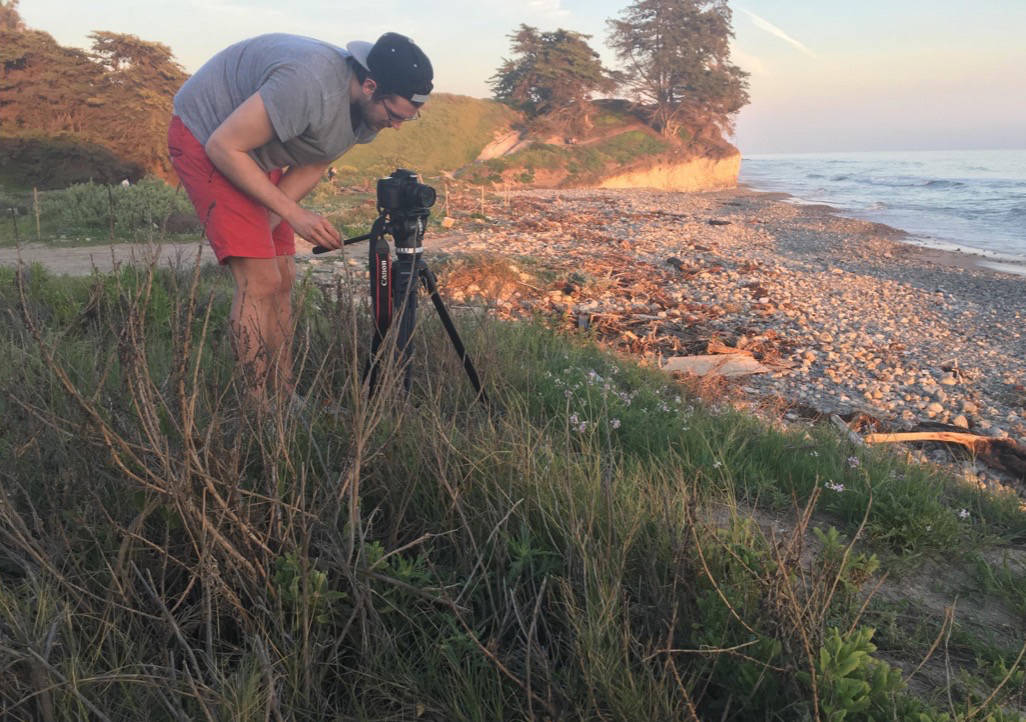A former Red Deerian is a member of the gifted team behind Vista: The Story of a Shooting Victim – one of several outstanding films to be showcased during the Central Alberta Film Festival (CAFF) which runs through to Feb. 23rd.
Written by Jesse Werkman, who is now based in Edmonton, and Patrick Michaud, the film will be featured Feb. 22nd at Carnival Cinemas.
It’s being included in the ‘Mature Drama Short’ category which begins at 6 p.m.
The film taps into the national media frenzy that immediately ensued and effectively contrasts that with a personal, up close look at some of the people directly affected by a shooting.
The personal stories, and what the victims and witnesses have to say, offers plenty of insight into the ‘human’ and deeply personal impact – the physical, emotional and mental scars left behind.
“I came across this shooting that we feature in the film and I was looking at the victim lists from an article about it,” explained Werkman. “Everyone who was injured or killed in the incident was around the same age as me, or was a university student,” he said.
“We couldn’t imagine what it would have been like to go through that.
On the evening of May 23rd, 2014, in Isla Vista, California, a lone shooter killed six people and injured 14 others near the campus of the University of California, Santa Barbara.
“It’s a beautiful location – very serene, and right on the ocean,” he recalled. “The shooting itself was all over the campus. The killer started at a sorority house on campus and then moved throughout the area in his car and basically did these drive-by shootings where he would spray bullets into highly-populated areas.
”In addition to that, he was also running people over in his car as he was driving through the community. So there wasn’t necessarily one crime scene in the shooting. There were sort of multiple scenes throughout the campus, the university community and residences of the students,” he said.
“To us (Werkman and Michaud), our university community at the University of Alberta was a safe space where you go to learn and to hang out with your friends. We couldn’t imagine what it would be like to experience a tragedy like that in an environment that is supposed to be supportive and safe,” he added.
The friends thought it would be interesting to delve into that particular incident and explore it in a deeper way via interviews with any survivors, witnesses and responders who would be willing to share their stories.
One of the shooting victims agreed to be interviewed and Werkman and Michaud also contacted a number of (members) of the Santa Barbara Police Department.
They were also able to interview the paramedic who saved the life of the victim they interviewed.
As to that survivor, he had been skateboarding down the street with his friend when the killer pulled up and shot him six times.
Ultimately, Werkman said the goal of the project was to tap into an intimate, first-person perspective of the tragedy.
”We wanted to let the shooting victim tell his own story of the experience, and of the trauma. And also, let the paramedic and the witness also talk about going through the experience.
“We also wanted to communicate a message of positivity and support in the aftermath of the shooting – how the community came together to really support the victims, support each other and help each other through this.”
Werkman, who also composed the score for the film, said that in reflecting on the experience, it’s striking just how similar in many ways the U.S. and Canada are, in spite of the prevalence of gun violence south of the border.
“It’s very jarring to imagine that shootings like this are so common in places that are so similar to where we live,” he explained. “It was really moving, and it was also inspiring to hear the stories of each individual and how they were able to deal with experiencing this trauma and how they are able to move on, heal and continue functioning in their everyday lives,” he said.
This year marks the third edition of the Festival which organizers describe as a bridge between the audience, critics and the contemporary filmmakers who want to showcase and discuss their work.
Meanwhile, 19 out of nearly 40 films being shown during CAFF have also been nominated for awards, which will be presented at a ceremony on Feb. 23rd after a special screening of Making Coco: The Grant Fuhr Story.
A full schedule can be found at www.cafilmfestival.ca.



